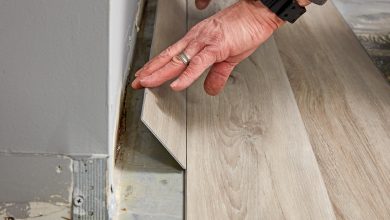Crafting Your Own DIY Ice Bath: A Comprehensive Guide
Recovery is a crucial part of any fitness regimen or athlete’s training schedule. While contrast baths and cold water immersion have gained popularity in recent years for their health and performance benefits, commercial solutions can be expensive. The good news is that with a bit of elbow grease and some affordable materials, you can easily craft your own DIY ice bath right at home.
Diy ice bath with water
One of the simplest DIY ice bath options is to simply use a bin or tub filled with water and ice. While basic, this method allows you to experience the benefits of cold water immersion right away, without any major setup costs.
To create a DIY ice bath using just water, you’ll need:
- A tub, bin, or barrel large enough to comfortably fit your arms or legs submerged up to the elbows or knees. Common options include plastic storage tubs or small kids’ playground pools/wading pools.
- Ice – You’ll require around 20-30kg of ice to sufficiently cool the water and maintain a cold temperature for 10-15 minutes. Crushed or cubed ice works best due to the increased surface area which melts faster into the water.
- Water – Fill your tub about 3/4 full with cool tap water before adding the ice. The ice will continue melting and diluting the water as you soak.
To use:
- Fill your tub with cool water as described above.
- Gradually add crushed or cubed ice, allowing it to mix in naturally.
- Test the water temperature – it should feel cold but not painfully freezing. Add more ice if needed.
- Carefully lower your arms or legs into the water up to the desired point. Remain for 1-3 minutes for your first soak.
- Gradually increase your soak time as tolerance builds up to a maximum of 10-15 minutes.
While basic, this budget-friendly DIY ice bath method allows you to reap benefits immediately. Just be sure to carefully monitor water temperature and not overdo exposures early on.
Diy ice bath freezer
If you have the space, another affordable DIY ice bath option is to repurpose a chest freezer by partially filling it with water. The stable cold temperature inside makes it ideal for safe, controlled ice bath exposures over long periods of time.
To set up a DIY ice bath freezer:
- Acquire a chest freezer in good working condition, with dimensions wide and deep enough for comfortable submersion. Second-hand units can often be found cheaply.
- Remove all shelving, drawers, and other interior fixtures from the freezer, leaving only a bare tub. This gives room to fully submerge your body.
- Test that the freezer door seals tightly to maintain temperature when open for soak sessions. Repair any issues before use.
- Partially fill the freezer bottom 3/4 full with cool water. Monitor water level – it will decrease slightly as ice forms around the edges in later use.
- Plug in and allow the freezer to reach optimal chilling temperature of 0-5 degrees Celsius. Place a waterproof thermometer inside to constantly monitor temp for safety.
- To soak, open the door and carefully lower your body into the water up to the desired point for graduated exposure times. Lift dry beforehand to avoid shocking your system.
Compared to other methods, a converted freezer maintains a safe, controlled temperature over long periods without additional ice replenishment needed. Just be sure the unit is in excellent working order before use.
Cheap DIY ice bath
For those looking to experience the benefits of ice baths on a very tight budget, one of the simplest and most affordable methods is to make a DIY ice bath using just a couple of buckets or basins and a cooler bag of ice.
Materials needed:
- Two plastic buckets or basins (larger for the main soak tub, smaller for the “ice bath”)
- Cooler bag or two of ice
- Optional – thermometer
Instructions:
- Fill the larger tub about 3/4 full with cool water.
- Fill the smaller tub with ice and place it inside the larger tub, partially submerged.
- Allow ice to melt into the water, stirring occasionally, until the temperature drops to uncomfortable cold (5-15°C).
- To soak, add more ice to the smaller tub as needed to maintain temperature. Place arms or legs in a larger tub and soak for the allotted time.
- Gradually increase exposures from just 1 minute initially up to 10-15 minutes maximum.
At a cost of under $20, this basic setup provides a portable, inexpensive way to experience ice bath benefits anywhere. Continue adding ice throughout soaks to maintain safe, cold temperatures.
Diy ice bath barrel
For those with some outdoor space, repurposing a barrel or large drum is another low-cost option. The insulation of wood or plastic helps keep water cold longer versus simple basin setups, perfect for longer relaxation soaks outdoors.
Materials needed:
- Plastic or wooden barrel/large drum (200-500L size)
- Ice – roughly 30-40kgs
- Cool temperature/water resistant thermometer
- Optional – stool for comfortable seated position
Instructions:
- Clean the barrel thoroughly to remove any residues. Test for leaks by filling partially with water.
- Place the barrel on a level surface near an outdoor tap. 3/4 fill with cool water.
- Carefully add crushed or cubed ice in batches, mixing well with a long-handled spoon or paddle between additions.
- Check the temperature frequently with a thermometer, adding more ice and stirring as needed to maintain a 5-15°C range.
- To soak, sit on a stool and lower yourself into the barrel up to desired point. Soak for allotted time while frequently monitoring temperature.
Besides being affordable, a repurposed barrel allows backyard soaks with multi-person capacity. A welcome addition for larger families or groups benefitting from ice bath therapy together regularly.
Water chiller for cold plunge
For those looking to take their DIY ice bath setup to the next level with consistent, thermostatically-controlled temperatures without ice replenishment – an aquarium water chiller provides the solution.
Water chillers (also called aquarium cooling pumps) are small submersible pumps paired with a thermostat that remove heat from the water to maintain steady below-room-temperature ranges. Models suitable for DIY ice baths start at $150-250.
Key factors to consider when choosing a water chiller include:
- Cooling capacity (100-300w ideal for small 100L ice baths)
- Thermostat range (ability to set between 0-20°C)
- Pump flow rate (higher GPH is better for transferring heat out faster)
- Materials (look for corrosion-resistant plastic or titanium components for safety)
To integrate a chiller:
- Select a tub/container and partially fill it with water
- Fully submerge and secure chiller pump/thermostat unit
- Plug in, set temperature via display, and circulate water continuously
- Adjust settings as needed to maintain 5-15°C immersion temperature
With effortless temperature control, a chiller-equipped DIY ice bath allows convenient, longer-term cold therapy sessions for serious athletes or those with limited mobility.
Ice bath conversion kit
For a mid-range DIY ice bath solution that combines affordability with conveniences like thermostat control – an insulation kit provides an adaptable DIY conversion option.
Insulation kits involve retrofitting everyday containers, like large plastic storage tubs, with additional insulation layers that increase thermal efficiency to extend cold water temps without ice replenishment for hours.
Common materials in an insulation kit:
- Rigid foam insulation board (cut-to-size tub inserts)
- Reflective insulation (aluminum/mylar sheeting)
- Weatherproof sealant (for joining materials)
- Thermometer/timer (included or additional purchase)
Steps to insulate a tub:
- Clean the tub interior thoroughly and test for waterproofness.
- Cut rigid foam to size tub shapes with generous overlap allowing seams.
- Seal foam inserts together and to the tub using an appropriate adhesive sealant.
- Line the interior with reflective sheeting for an additional barrier.
- Add kit controls like thermometer clip/timer and test performances.
With a one-time investment of $50-150 for materials, insulation kits provide a simple way to significantly boost efficiency without the complexity of chillers. Ideal for those seeking convenience closer to commercial grade systems affordably.
FAQ about DIY ice baths
How do you make an ice bath with salt?
Adding a small amount of salt to an ice bath can lower the freezing point of the water, allowing it to remain liquid at cooler temperatures compared to freshwater alone. To make an ice bath with salt:
- Fill your tub 3/4 full with cool water as normal.
- Add 1/2 to 1 cup of plain table or sea salt and stir until fully dissolved.
- Add ice and monitor temperature – it should reach and maintain the 5-15°C therapeutic range with less ice needed compared to freshwater.
- Soak, as usual, being aware the slightly saltier water may feel cooler to your skin compared to a freshwater bath. Rinse the area afterward.
How do you start an ice bath for beginners?
When first starting ice bath therapy, it’s important to gradually acclimate your body to the cold temperatures to avoid painful shocks:
- Fill your bath and add just a small amount of ice to start, testing the water to ensure it is cool but not freezing.
- Limit your first soak exposures to just 1 minute, adding brief 30 second increments each session as tolerance increases.
- Focus on fingers, hands, or feet for initial immersions rather than full submersions.
- Soak daily, if possible, for the quickest acclimation. Within one week, most can comfortably tolerate 10 minutes.
- Don’t push through pain – a brisk, breathless sensation is normal, but you shouldn’t feel prolonged burning.
Starting slowly allows you to maximize benefits while avoiding setbacks that come from pushing limits too aggressively early on.
How do you ice bath without ice?
While ice accelerates cooling, it’s possible to experience therapeutic cold exposure benefits without it:
- Fill your bath vessel with cool (not cold) water directly from the tap.
- Soak exposed areas (arms, legs etc.) for a maximum 15-20 minutes repeatedly to allow the water to gradually wick heat from your body tissues.
- Water temperature should feel comfortably cold to your skin, inducing a mild reactive stress response, but not cause prolonged pain tolerance issues.
- Continue soaking until you feel reset from your prior exertions. Even without dropping below 15°C, benefits will still occur from prolonged mild cooling exposures.
On hot days when ice isn’t available, multiple long soak sessions provide an effective alternative to trigger therapeutic stress responses.
How can I use a freezer as an ice bath?
With some modifications, a chest freezer can function as an at-home ice bath station (as outlined earlier):
- Remove all shelves/walls so it’s an empty tub interior large enough for limbs
- Partially fill with cool water and monitor temperature displays built into most freezers.
- Soak exposed areas like arms up to the desired point for 5-15 minutes.
- Be cautious of the freezer door seal to avoid temperature leaks compromising its safe 0-5°C therapeutic range.
Caution must be taken to ensure freezers are in excellent working condition without disused/faulty components before repurposing. Test temperature stability for safety.
Can you use frozen water bottles for ice baths?
Yes, frozen water bottles can definitely be used in place of ice cubes to cool bath water, with some considerations:
- Freeze smooth-sided plastic bottles completely full of water and lay them flat in the bottom of your bath
- The thicker plastic takes longer to melt compared to ice cubes, providing more sustained chilling
- Monitor temperature closely, as without ice, agitation bottles may cool water past the optimal 5-15°C range if too many are used
- Consider rotating between chilled and fresh bottles to maintain correct temperatures over longer soak periods.
While perhaps less convenient than ice, re-freezable water bottles offer a reusable, mess-free alternative for portable ice bath cooling on the go too.
What can I use for a homemade ice bath?
Some alternative everyday household items that can be repurposed for a homemade DIY ice bath setup include:
- Large plastic storage tubs or small children’s pools
- Cooler bags or eskies
- Washtubs or mop buckets
- Large cookie/baking sheets lined with ice
- Sturdy kiddie pools or inflatable pools
- Large Rubbermaid containers or trash cans
Nearly any water-resistant vessel that allows safe submersion and drainage afterward can work when filled part-way with cool water and ice. Experiment to see what best suits your space and comfort needs. Getting creative is half the fun of DIY projects!



